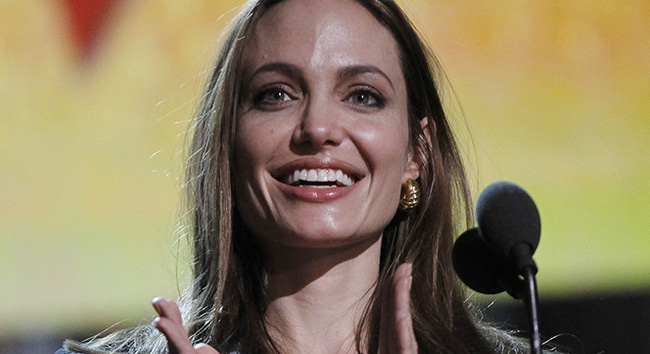Angelina Jolie rejected cancer from her body
WRITINGin the NY Times, Angelina Jolie talks about her double mastectomy. Many women have been brave enough to do this. But when you have the looks of a Hollywood star, the drastic action seems ever more incredible.
Jolie was told she had an 87 percent chance of getting breast cancer and a 50 percent chance of getting ovarian cancer.
My mother fought cancer for almost a decade and died at 56. She held out long enough to meet the first of her grandchildren and to hold them in her arms. But my other children will never have the chance to know her and experience how loving and gracious she was.
We often speak of “Mommy’s mommy,” and I find myself trying to explain the illness that took her away from us. They have asked if the same could happen to me. I have always told them not to worry, but the truth is I carry a “faulty” gene, BRCA1, which sharply increases my risk of developing breast cancer and ovarian cancer.
And:
I wanted to write this to tell other women that the decision to have a mastectomy was not easy. But it is one I am very happy that I made. My chances of developing breast cancer have dropped from 87 percent to under 5 percent. I can tell my children that they don’t need to fear they will lose me to breast cancer.
Siddhartha Mukhergee wrote about her cancer in The Emperor of All Maladies:
Like cancer prevention, cancer screening will also be reinvigorated by the molecular understanding of cancer. Indeed, it has already been. The discovery of the BRCA genes for breast cancer epitomizes the integration of cancer screening and cancer genetics. In the mid-1990s, building on the prior decade’s advances, researchers isolated two related genes, BRCA-1 and BRCA-2, that vastly increase the risk of developing breast cancer. A woman with an inherited mutation in BRCA-1 has a 50 to 80 percent chance of developing breast cancer in her lifetime (the gene also increases the risk for ovarian cancer), about three to five times the normal risk. Today, testing for this gene mutation has been integrated into prevention efforts. Women found positive for a mutation in the two genes are screened more intensively using more sensitive imaging techniques such as breast MRI. Women with BRCA mutations might choose to take the drug tamoxifen to prevent breast cancer, a strategy shown effective in clinical trials. Or, perhaps most radically, women with BRCA mutations might choose a prophylactic mastectomy of both breasts and ovaries before cancer develops, another strategy that dramatically decreases the chances of developing breast cancer.
And:
An Israeli woman with a BRCA-1 mutation who chose this strategy after developing cancer in one breast told me that at least part of her choice was symbolic. “I am rejecting cancer from my body,” she said. “My breasts had become no more to me than a site for my cancer. They were of no more use to me. They harmed my body, my survival. I went to the surgeon and asked him to remove them.”
Spotter: Kottke
Posted: 14th, May 2013 | In: Celebrities Comments (2) | TrackBack | Permalink



